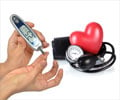Consider limiting serine and glutamine-rich foods or opting for those with lower levels of these amino acids to boost pulmonary hypertension treatment efficacy.

‘To enhance the efficacy of current medications for patients with pulmonary #hypertension, it may be beneficial to avoid foods high in #serine and glutamine or consume foods with reduced levels of these amino acids. ’





The findings were published in the journal Cell Metabolism. Understanding the Role of Amino Acids in Pulmonary Hypertension
Amino acids are the building blocks of proteins, which help build cellular structures, carry out biological functions, and regulate tissue and organ function. As hypertensive pulmonary blood vessels metabolize glutamine and serine, they create two new amino acids, called proline and glycine. Proline and glycine are the primary building blocks of collagen protein, which makes up 30% of our body’s total protein and provides a structural framework for our skin, muscles, bones and connective tissues. The appetite for glutamine and serine and the resulting elevated levels of proline and glycine in hypertensive pulmonary blood vessel cells drive the overproduction of collagen, which leads to vessel stiffening and impaired function—the hallmark feature of pulmonary hypertension.Using rodent models for the disease, the researchers saw that drugs that limit cellular uptake of glutamine and serine deprived hypertensive pulmonary blood vessels of their craving. In turn, the lack of cellular glutamine and serine metabolism halted the excess production of collagen building blocks and collagen production. Knowing amino acids are most often absorbed through our diets, the team also discovered that reducing the dietary intake of glutamine- and serine-rich foods helped reduce collagen overproduction.
“For the first time, we have a dietary maneuver that may serve as an effective therapy for the disease,” says Chan, who also directs the Vascular Medicine Institute and Center for Pulmonary Vascular Biology and Medicine at the University of Pittsburgh School of Medicine and UPMC.
“It opens up a new way that we could treat this disease, because now—instead of just relying on medications and transplantation—there are possibly effective lifestyle interventions,” says Chan.
Advertisement
Source-Eurekalert















